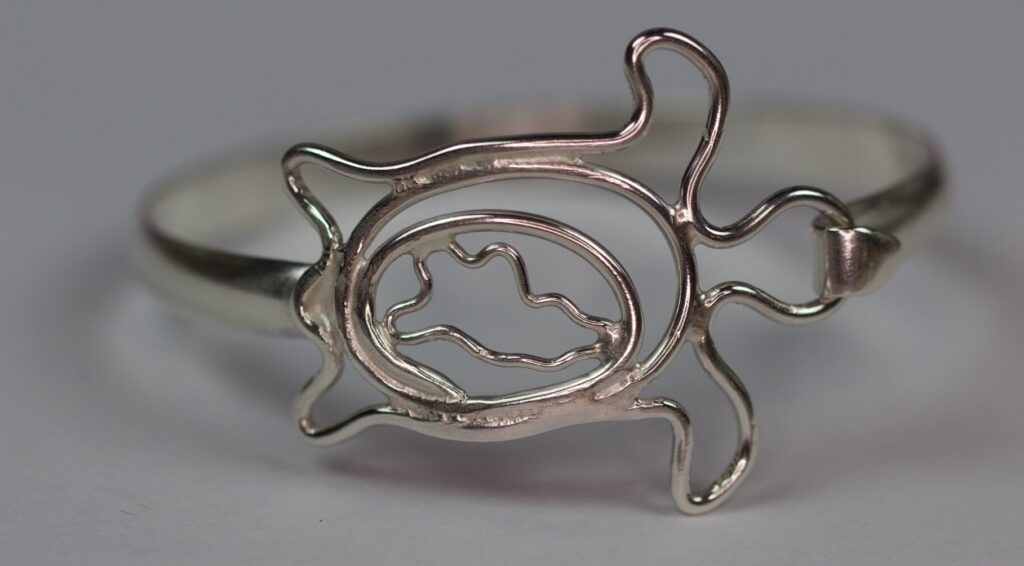Crafting
The Truth about Silver in Jewelry
Jewelry has been a mark of status for centuries. In ancient Rome, only certain citizens had the right to wear jewelry. In Ancient Greece, jewelry was often sent as gifts to give the wearer protection from the “Evil Eye”. In Egypt, jewelry was used to symbolize political and religious power and was considered so valuable that wealthy Egyptians wore their jewelry in death.
Silver has been used in the making of jewelry for centuries. It is considered a precious metal, meaning it is a rare, naturally occurring metal of high value. Silver is considered one of the seven metals of antiquity: gold, silver, copper, tin, lead, iron, and mercury. In physics, it is considered one of the three “noble metals”, those being copper, silver, and gold. Noble metals are named as such due to their high resistance to corrosion. Silver in particular has high antibacterial properties, making it useful for silverware and other cutlery.
Today, silver can be found in a wide variety of products, from solar panels, water filtration systems, electrical contacts and conductors, in mirrors, stained-glass, in silverware, and in coins. Silver in jewelry is rarely 100% pure silver due to its malleable and soft properties. Instead, silver is typically mixed with other metals to make it stronger and more durable than pure silver alone. The most common metal is copper, but other metals include germanium, zinc, platinum, silicon, and boron.
One of the downsides to mixing silver with these other metals is that it makes the silver susceptible to tarnishing. Tarnish is simply a metal’s reaction to nonmetals, typically oxygen and sulfur dioxide. It is actually a thin layer of corrosion that is intended to preserve the underlying metal, but appears as a dull, gray or black film covering atop the silver. The higher the copper content, the more susceptible to tarnishing the silver will be.
To combat tarnishing, we clever humans have come up with new mixtures of silver alloys called “non-tarnish silver” that increase their resistance to tarnish compared to other forms of silver. In the following sections we explore five common types of silver found in jewelry.
Fine Silver
The purest silver used in jewelry, Fine Silver is characterized by it near-white color and lustrous appearance. Because of its high silver content, Fine Silver can be formed into much more delicate and intricate shapes than other forms of silver. Also, because of its high sliver content, it has a higher resistance to tarnishing.
The same properties that make fine silver more intricate also make it prone to scratching and dents. For this reason, fine silver is recommended for earrings, necklaces, and pendants. Fine silver is hypoallergenic.
Quality Stamp / Mark: 999, .999FS
|
Metal |
Composition |
|
Silver |
99.9% |
|
Copper |
00.1% |
Sterling Silver
This is the most common and popular type of silver used in jewelry. Sterling silver is lustrous and reflective, but is susceptible to tarnishing easily. It is hypoallergenic, but due to the copper content and sometimes trace amounts of nickel or other metals, there are rare cases where people have reported allergic reactions to sterling silver.
Sterling silver is suitable for all types of jewelry, including earrings, necklaces, pendants, broaches, rings, and bracelets. Some jewelers add rhodium plating to enhance the whiteness, brilliance, and durability of sterling silver.
Most jewelry made at CariBling uses quality Sterling Silver.
Quality Stamp / Mark: 925, Sterling, STER, STG, or SS, the Lion Passant
|
Metal |
Composition |
|
Silver |
92.5% |
|
Copper |
07.5% |
Argentium Silver
One of several silver metal alloy combinations developed in the 1990s designed to make the metal more tarnish-resistant than Sterling Silver. Argentium is a proprietary brand developed by Argentium Silver Company in the UK and is identified by the logo featuring a winged unicorn.
Argentium is more durable than sterling silver as it is less prone to scratching and denting. Also, because the metal is harder, it is less likely to lose its shape. Argentium is also whiter and brighter than sterling silver, and is firescale and firestain resistant, meaning it is less likely to have dark marks that can sometime be found in sterling silver objects when heated.
As one would expect, these benefits come with a higher price than sterling silver. Argentium has no nickel and is hypoallergenic.
Quality Stamp / Mark: 935 or 960, Sterling, STER, STG. Proprietary brand: Winged Unicorn.
|
Metal |
Composition |
|
Silver |
93.5% or 96.0% |
|
Germanium Zinc Boron Copper |
06.5% or 04.0% |
Silvadium Silver
Like Argentium silver, Silvadium silver was created to combat the challenges found with traditional sterling silver. Created in 2008 by United Precious Metal Refining Inc in the US, Silvadium uses palladium instead of copper to make the silver stronger and harder than sterling silver. Silvadium is often offered as an alternative to platinum jewelry, especially for wedding rings, as the metal has a brighter shine than either platinum or sterling silver. Silvadium is hypoallergenic.
Quality Stamp / Mark: 930, Sterling, STER, STG, Silvadium
|
Metal |
Composition |
|
Silver |
93.7% |
|
Palladium |
06.3% |
|
Germanium |
Trace |
Sterlium Silver
Another germanium-based variant by United Precious Metal Refining company, Sterlium silver is a deoxidized sterling silver brand that has greater hardness and brilliance than standard sterling silver. Sterlium is unique as it is extremely user-friendly to work with compared to other germanium-based sterling silvers. Sterlium silver is hypoallergenic.
Quality Stamp / Mark: 930, Sterling, STER, STG, Sterlium
|
Metal |
Composition |
|
Silver |
93.0% |
|
Zinc |
04.0% |
|
Copper |
03.0% |
|
Germanium |
Trace |

